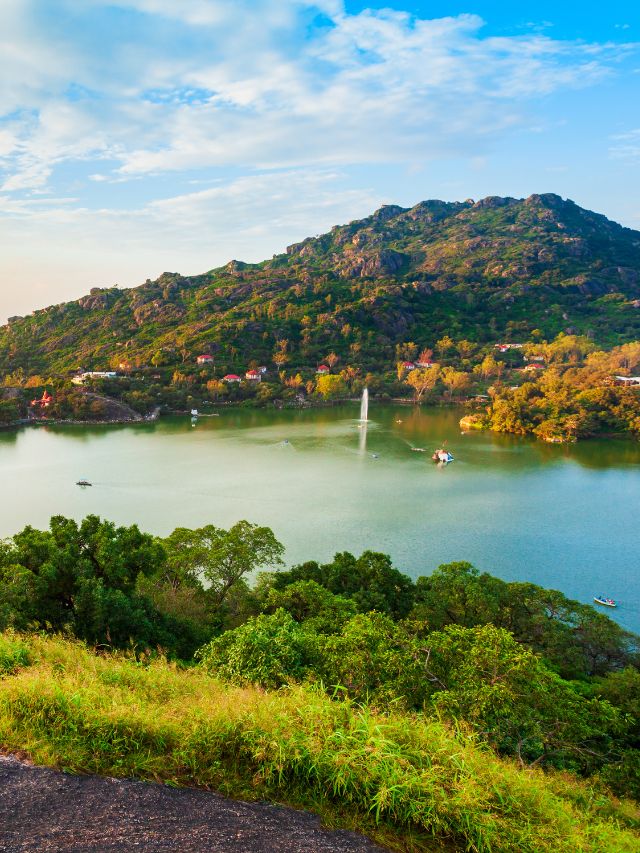Here are 10 key points about India’s Tourism Sector Set to Reach ₹35 Trillion, Boosting Global Economy and Shaping the Future of Travel
- India’s Tourism Boom – The sector is projected to reach ₹35 trillion by 2029, contributing 9.6% to the GDP.
- Surge in Outbound Travel – Outbound trips are expected to reach 29 million by 2025, generating $62 billion in revenue by 2026.
- Business Travel Growth – India ranks among the largest global markets for business travel, with business trips making up 25% of outbound travel.
- Government’s Budget Initiatives – The Union Budget 2025 includes plans to develop and upgrade India’s top 50 tourist destinations.
- Performance-Linked Incentives – States will receive incentives for enhancing tourism infrastructure, cleanliness, and visitor services.
- Support for Small Businesses – MUDRA loans for homestays aim to boost local tourism entrepreneurship and alternative accommodations.
- Spiritual Tourism Expansion – Investments are planned for sites related to Lord Buddha, enhancing India’s appeal as a spiritual travel hub.
- Medical Tourism Promotion – The ‘Heal in India’ initiative will streamline visas and improve healthcare access for foreign patients.
- Evolving Travel Preferences – Rising interest in religious tourism (97% growth in searches), premium stays, and last-minute hotel bookings.
- Employment Growth Potential – India is expected to contribute one in five new global travel & tourism jobs over the next decade.
India’s Tourism Sector Poised for Rapid Growth, Projected to Reach ₹35 Trillion
India’s travel industry is emerging as a key player in the global economy, with outbound trips expected to reach 29 million by 2025 and revenues projected to hit $62 billion by 2026. As the sector continues to expand, it is becoming a major economic driver, shaping the future of international travel and tourism.
Outbound Travel Growth and Its Global Impact
India’s outbound travel market is on a steady rise, with an estimated 13.9 million leisure departures anticipated by 2025. According to a report by Expedia, this will translate to 19.4 million Indian travelers exploring international destinations, largely driven by demand from Tier II and Tier III cities. Business travel is also a significant contributor, accounting for nearly a quarter of outbound trips. India has now positioned itself among the largest global markets for business travel, further solidifying its role in international tourism.
India’s Tourism Sector on a Strong Growth Path
By 2029, India’s tourism industry is expected to grow at an annual rate of 6.7%, reaching a total valuation of ₹35 trillion. This expansion will account for approximately 9.6% of the country’s GDP. The increasing wealth, rising disposable incomes, and growing aspirations of travelers—especially from smaller cities—are key factors driving this surge. With outbound trips projected to touch 29 million by 2025, India’s tourism sector is set to generate around $62 billion in revenue by 2026.
Also Read: 10 Must visit Travel Destination in the World 2025
Union Budget 2025: A Boost for India’s Tourism Industry
The Union Budget 2025, presented on February 1, outlined ambitious initiatives to elevate India’s tourism sector. One of the key highlights is the government’s plan to develop and upgrade the country’s top 50 tourist destinations in collaboration with state authorities. This initiative aims to enhance infrastructure, create employment opportunities, and boost both domestic and international tourism.
To further support this vision, the government has introduced performance-linked incentives for states to improve tourist destinations. These incentives encourage better infrastructure, cleaner environments, and enhanced visitor experiences. Additionally, a proposal to harmonize hotel classification standards will ensure a more consistent and high-quality experience for both domestic and international travelers.
Encouraging Local Tourism and Supporting Small Businesses
A major initiative in the budget is the provision of MUDRA loans for homestays, allowing individuals and small businesses to enter the tourism industry. This move is expected to decentralize tourism, enabling local entrepreneurs to cater to the increasing demand for unique and personalized travel experiences. The growing preference for alternative accommodations makes this initiative particularly relevant, as more travelers seek homely, immersive stays.
Also Read: 10 Best Bachelor Party Places in India
Spiritual and Medical Tourism on the Rise
The Indian government is also prioritizing spiritual tourism, particularly at sites associated with Lord Buddha. Infrastructure development at these religious and historical sites is set to make them more attractive to both domestic and international visitors, further positioning India as a global hub for spiritual travel.
Additionally, the ‘Heal in India’ initiative aims to boost medical tourism by streamlining visa processes and offering world-class healthcare at competitive prices. With India already being a preferred destination for affordable, high-quality medical treatment, this program is expected to further solidify the country’s reputation in the global medical tourism sector.
Shifting Travel Trends Among Indian Tourists
Indian travel preferences are evolving, with a significant increase in outbound travel from Tier II and Tier III cities. Searches for religious destinations have surged by 97%, highlighting a growing interest in spiritual journeys. Family travel bookings have also increased by 64%, while solo travel has grown by 23%.
Domestic travel trends indicate a shift toward last-minute hotel bookings, with a 24% rise in demand for alternative accommodations. Furthermore, Indian families are increasingly opting for premium stays, with 20% of bookings targeting hotels costing over ₹10,000 per night. This shift underscores a rising preference for high-end travel experiences among Indian tourists.
Tourism’s Role in Employment and Economic Growth
The future of India’s travel and tourism sector looks highly promising. According to the World Travel and Tourism Council (WTTC), India is expected to contribute one in five new global travel and tourism jobs over the next decade. This highlights the immense potential of the sector in driving employment and economic development.
With strong government backing and private sector involvement, India’s tourism industry is poised for a transformational phase. The focus on infrastructure, international tourism, and local economic growth will make India an even more attractive destination for travelers worldwide, further solidifying its position as a key player in the global travel industry.
Also Read: Top 10 Romantic Places to Visit in Shimla for Honeymoon
Check Latest Stories:





